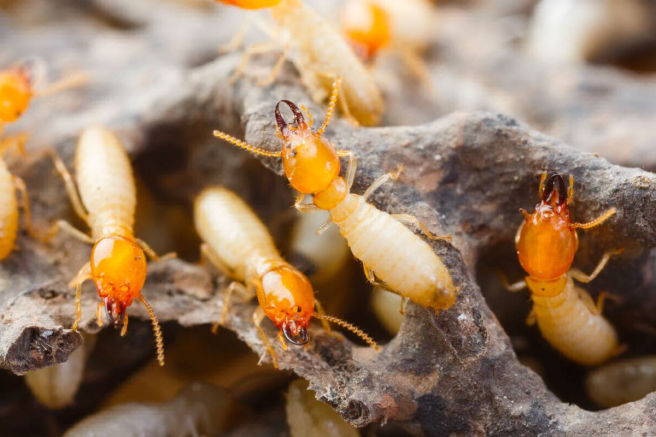Types of TERMITES

Subterranean
Subterranean termites can cause the most damage of any termite species. These termites build distinctive tunnels, often referred to as “mud tubes,” to reach food sources and protect themselves from open air. They eat wood 24 hours a day, seven days a week, using their saw-toothed jaws to bite off small fragments of wood one piece at a time. Over time, subterranean termites can critically damage a building structure, sometimes causing a total collapse.

Drywood
Drywood termites infest dry wood, like that found in attic framings. They can be transported to new locations via an infested piece of furniture, a picture frame, etc. Drywood termites can chew through support beams, floors and walls, causing expensive home repairs. In fact, drywood termites and other termite species cause a collective $5 billion in property damage each year.

Dampwood
Dampwood termites are usually found in logs, stumps, dead trees, fence posts and utility poles. Dampwood termites do not usually infest structures because of their need for excessive moisture. However, care must be taken to avoid attracting dampwood termites to a structure, as they can cause serious property damage. These termites create a series of chambers in wood, which are connected by tunnels with smooth walls, as if sandpapered.
